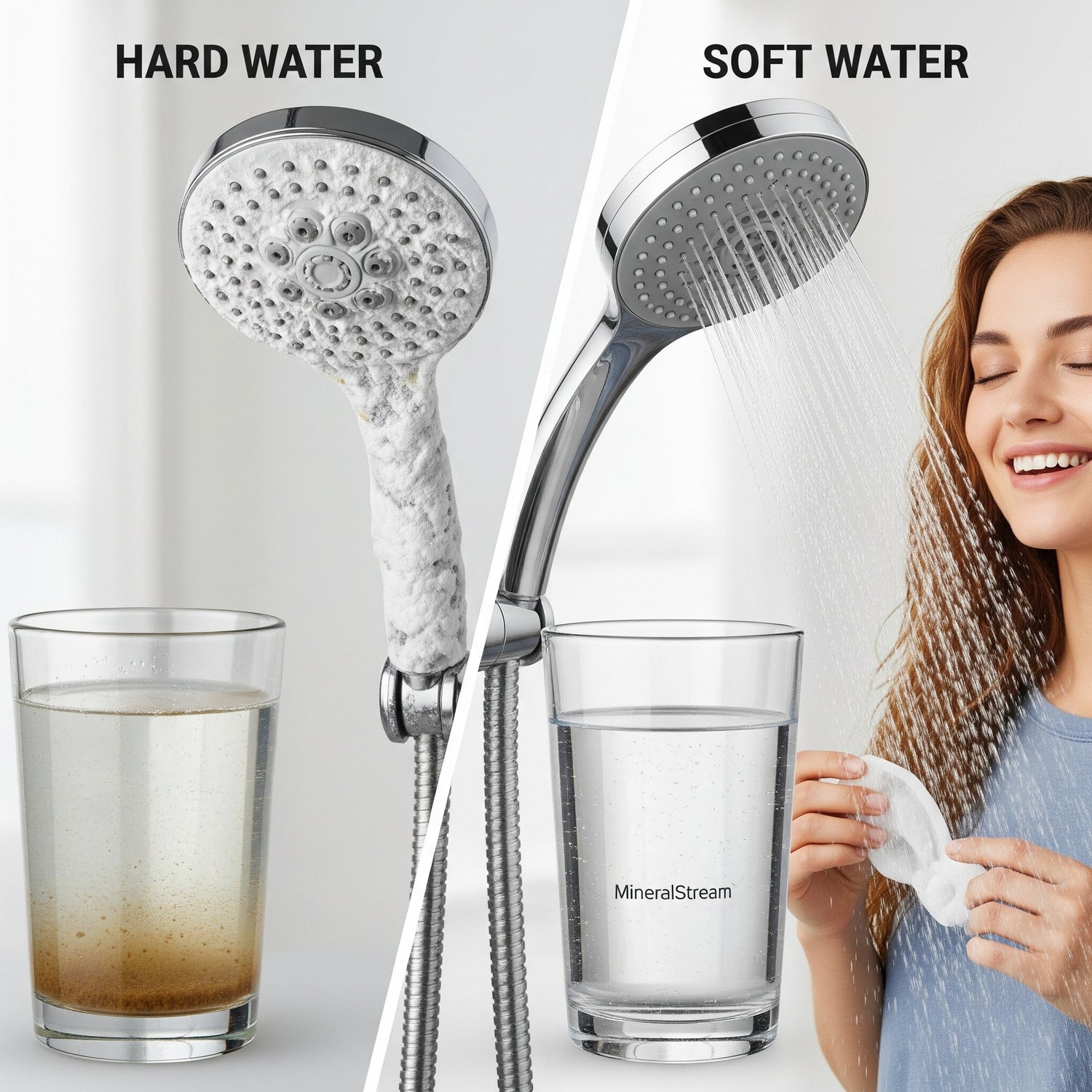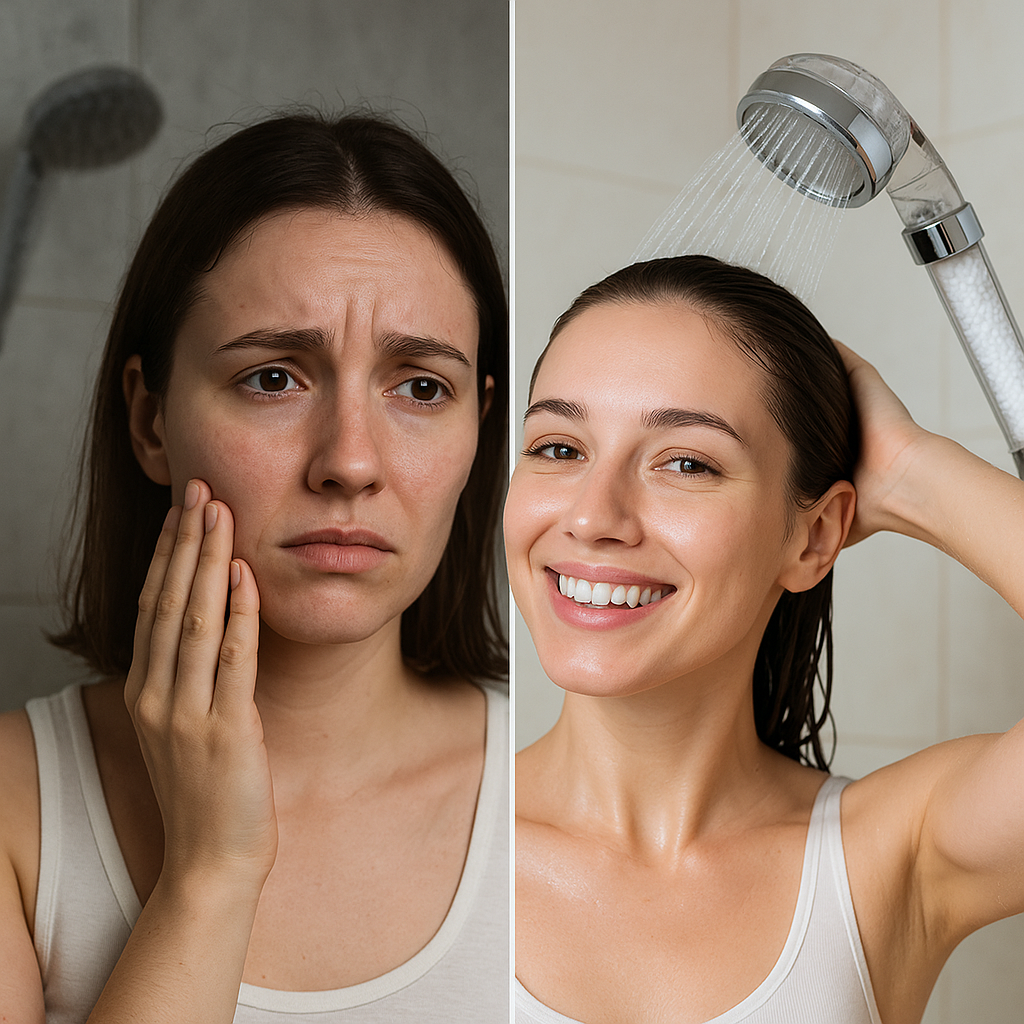I. Introduction: More Than Meets the Eye (or Thirst!)
Most of us are mindful of the water we drink, perhaps even filtering it to ensure its purity and taste. But what about the vast amounts of water that touch our skin daily, cleanse our clothes, and run through our home's essential appliances? This water, often overlooked, has a profound and unseen impact on our daily comfort, our health, and even our household finances. The quality of this everyday water, from the shower to the washing machine, plays a far more significant role in our lives than many realize.
Tap water, while treated by municipalities to be safe for consumption, can carry a hidden cargo of dissolved minerals that cause hardness, disinfectants like chlorine, and even traces of sediment or rust picked up from aging pipes. These elements, while often invisible to the naked eye, can wage a quiet war on our bodies and our homes. The gradual accumulation of their effects might lead one to blame a new shampoo for dull hair or assume an appliance is simply succumbing to age, without ever suspecting the water itself is the persistent culprit.
This isn't just about quenching thirst; it's about understanding the holistic role water plays in our lives. This exploration will delve into how a home's water quality might be secretly sabotaging skin and hair health, contributing to the premature aging of appliances, and making cleaning chores more arduous than they need to be. More importantly, it will illuminate how individuals can take control and transform their water from a source of subtle, daily frustration into a foundation for enhanced well-being and a smoother-running home. Recognizing these widespread effects is the first step toward seeking effective solutions.
II. What’s Really Flowing From Your Faucet? Unmasking Common Water Woes
The water that arrives at the tap is a complex substance. While local water authorities work diligently to ensure its safety, several common characteristics and components can still lead to a host of issues within the home environment.
A. The Hard Truth About Hard Water (Calcium & Magnesium)
Hard water is defined by its high concentration of dissolved minerals, primarily calcium and magnesium. While these minerals are not generally considered a direct health risk when ingested, their presence in water used throughout the home can be a significant, yet often underestimated, source of daily nuisances and long-term damage. The impact of hard water is rarely sudden; instead, it's a gradual accumulation of effects that can leave homeowners puzzled by persistent issues.
1. Skin & Hair Nightmares: The Beauty Thief in Your Pipes
The minerals in hard water can be particularly unkind to skin and hair. They are known to disrupt the skin's natural moisture barrier, which can lead to persistent dryness, uncomfortable itchiness, and general irritation. This occurs because the minerals can leave an invisible residue or film on the skin after washing. This film not only strips away natural oils but can also clog pores, potentially leading to breakouts or exacerbating pre-existing skin conditions such as eczema, psoriasis, or acne. For individuals with sensitive skin, hard water isn't just an irritant; it can be a significant aggravator, turning a simple daily shower into a trigger for discomfort.
The effects on hair are equally stark and often frustrating. Mineral buildup from hard water coats the scalp and individual hair shafts, leading to a cascade of undesirable outcomes: a dry, flaky scalp that can be mistaken for dandruff, and hair that feels filmy, dull, and lifeless. Hair can become brittle, more prone to breakage, and difficult to manage, appearing frizzy even after styling. Furthermore, these mineral deposits can block hair follicles, potentially causing inflammation and, in some cases, even leading to reduced hair growth. For those who invest in hair color, hard water can be a costly adversary, as it often causes color-treated hair to fade more quickly, diminishing the vibrancy and longevity of salon services.
2. Appliance Agony: The Slow Creep of Scale
The very same minerals that cause distress for skin and hair also wreak havoc on water-using appliances. When hard water is heated, as in a kettle, water heater, or dishwasher, the dissolved calcium and magnesium precipitate out of the solution and form limescale – a hard, chalky, and stubborn deposit. This insidious scale insidiously coats heating elements, acting like a layer of insulation. This forces appliances to work significantly harder and consume more energy to achieve the desired temperature, leading to noticeably higher utility bills.
Beyond energy inefficiency, limescale clogs pipes, reduces water flow in showerheads, and blocks the delicate water jets in dishwashers and washing machines. The consequences are multifaceted: decreased performance (dishes that aren't quite clean, showers with weak pressure), increased wear and tear on components, and a significantly shortened lifespan for these expensive household investments. This often translates into more frequent and costly repairs, or the premature need for complete appliance replacements. In the kitchen, kettles afflicted with limescale buildup not only heat water less efficiently but can also impart an undesirable taste to tea or coffee, as mineral flakes can break off into the beverage. The financial and convenience costs associated with appliance degradation due to hard water can accumulate substantially over time.
3. The Never-Ending Cleaning Cycle: Battling Soap Scum
Hard water minerals have a problematic interaction with soaps and detergents. They react to form soap scum, that familiar, unsightly, and difficult-to-remove film that clouds shower doors, coats tiles, and dulls fixtures. This makes routine cleaning a more arduous and time-consuming task, often necessitating the use of stronger, harsher chemical cleaners to achieve satisfactory results.
Furthermore, the presence of these minerals reduces the overall effectiveness of soaps and detergents. This means more product is required to achieve an adequate lather and the same level of cleanliness for dishes, laundry, and personal hygiene. Clothes washed repeatedly in hard water can emerge feeling stiff, scratchy, and looking dull, as mineral residues become trapped in the fabric fibers. This not only impacts the comfort and appearance of garments but also contributes to increased consumption of cleaning supplies.
B. Chlorine & Chloramine: The Double-Edged Sword
Chlorine, and its common alternative chloramine, are intentionally added to municipal water supplies. Their presence is a critical component of public health infrastructure, but their journey doesn't end benignly at the tap.
1. Guardian of Our Water: Why It's There
The primary purpose of adding chlorine or chloramine to drinking water is disinfection. These chemicals are highly effective at killing or inactivating harmful bacteria, viruses, and other microorganisms that could otherwise cause widespread waterborne diseases. As water travels through extensive networks of pipes from treatment plants to homes, these disinfectants provide a residual protective effect, ensuring the water remains safe for consumption upon arrival. Acknowledging this vital role is important before considering the unintended consequences.
2. The Price of Purity: Skin and Hair Stripping
Despite its benefits, chlorine is a strong oxidizing agent. This property, so effective against pathogens, also means it can strip away the natural, protective oils (sebum) from skin and hair. Regular exposure to chlorinated water, especially during showers and baths, can lead to noticeable dryness, itchiness, and irritation of the skin. For hair, this stripping action can leave strands feeling brittle, looking dull, and becoming more susceptible to damage like breakage and split ends.
Color-treated hair is particularly vulnerable to the effects of chlorine. The chemical can accelerate the fading of artificial hair color, reducing the vibrancy and lifespan of salon treatments. In some instances, particularly with bleached or blonde hair, chlorine exposure can even lead to undesirable color alterations, such as the development of a greenish tint. This means that individuals investing in hair coloring services may find their efforts undermined by their daily shower water.
3. That "Pool" Smell & Taste: Impact on Your Daily Brew and Hydration
The distinct chemical smell and taste that chlorine imparts to tap water can be quite off-putting for many individuals. This can inadvertently discourage adequate daily hydration simply because the water isn't appealing. Beyond drinking water, these characteristics can significantly alter the flavor profiles of beverages prepared with tap water, such as coffee and tea. Chlorine has the potential to react with the delicate organic compounds present in coffee beans and tea leaves, often resulting in a harsher, more acidic, or generally "off" taste that masks the intended nuances of the brew. For those who appreciate good quality coffee or tea, chlorinated water can be a hidden saboteur of their culinary experience.
4. Hidden Risks: Disinfection Byproducts (DBPs)
A more subtle concern associated with chlorinated water is the formation of disinfection byproducts (DBPs). When chlorine (or chloramine) reacts with naturally occurring organic matter present in water sources, it can create new chemical compounds, the most well-known group being Trihalomethanes (THMs). Some DBPs have been linked in scientific studies to potential long-term health risks with prolonged exposure. Notably, exposure to these byproducts can be significantly higher during showering or bathing compared to drinking water alone. This is because the warmer water temperatures cause these volatile compounds to vaporize into steam, which can then be inhaled, and also because warm water opens skin pores, potentially increasing dermal absorption. This "showering dilemma" means that an activity intended for cleansing could inadvertently increase exposure to these undesirable compounds.
C. The Uninvited Guests: Other Potential Contaminants
Beyond hardness minerals and disinfectants, various other substances can sometimes make their way into tap water, often originating from the natural environment or from the very infrastructure designed to deliver it.
1. A Quick Look: Sediment, Rust, Trace Heavy Metals
- Sediment & Rust: Particulate matter such as sand, silt, clay, or rust flakes from corroding pipes can find its way into the water supply. These particles can cause the water to appear cloudy, discolored (e.g., brownish or reddish), or leave visible residues in sinks and tubs.
- Trace Heavy Metals: A more serious concern is the potential presence of trace heavy metals. Lead, for example, can leach into water from older lead pipes, solder used in plumbing (common before stricter regulations), and some brass fixtures, particularly if the water is corrosive. Even at low levels, lead exposure is a significant health concern, especially for infants and young children due to its neurotoxic effects. Copper can also leach from pipes and fixtures under corrosive water conditions. While essential in trace amounts, excessive copper can cause gastrointestinal issues and liver damage over time. Other metals, such as arsenic, can be naturally present in groundwater sources in some regions and may persist in tap water if not specifically treated for removal.
2. Beyond "Safe": Aesthetic Issues and Minor Irritations They Can Cause
While municipal water treatment is designed to ensure water meets legally defined safety standards for consumption, the presence of these "uninvited guests" can still lead to a range of undesirable aesthetic problems and, in some cases, minor irritations. Stained laundry, unsightly greenish-blue stains on sinks and around drains (often from copper corrosion), discolored water (which can be red, brown, yellow, or blue-green depending on the contaminant), and an unpleasant bitter or metallic taste are common manifestations. These aesthetic issues are often the first visible signs that something is amiss with the water quality, and they can be indicative of underlying problems like pipe corrosion, which can lead to further plumbing damage and increased metal leaching.
Although the water is treated to be "safe," the continuous presence of these substances can still cause minor skin irritation for some sensitive individuals. Moreover, the long-term, low-level ingestion of certain heavy metals, even if below acute toxicity levels, is generally considered undesirable from a health perspective. The "last mile" problem is also relevant here: water may leave the treatment plant meeting all standards, but it can pick up contaminants from the distribution system and from a home's internal plumbing, especially in older houses. Thus, what arrives at the tap may not be of the same quality as when it left the municipal facility.
III. The Ripple Effect: How Poor Water Quality Dampens Your Daily Life
The abstract concepts of water hardness, chlorine content, and trace contaminants translate into tangible, often frustrating, daily realities. These issues create a ripple effect, touching nearly every aspect of home life and personal care, often adding extra work and diminishing enjoyment.
A. Bathroom Blues: From Post-Shower Dry Skin and Lackluster Locks to Stubborn Soap Scum.
Imagine stepping out of a warm shower, an act intended to be cleansing and refreshing, only to feel skin tighten uncomfortably or begin to itch. Picture styling hair that feels persistently straw-like, dull, and refuses to hold its shine, no matter the array of expensive shampoos or conditioners used. These are common bathroom blues, frequently orchestrated by the unseen duo of hard water and chlorine. The minerals in hard water leave behind a film that can clog pores and significantly dry out both skin and hair, while chlorine diligently strips away the body's protective natural oils. This daily assault can leave individuals in a constant battle against dryness and irritation.
Then there's the seemingly endless chore of scrubbing away soap scum from shower doors, tiles, and fixtures. This stubborn, milky residue is a direct chemical byproduct of hard water minerals reacting with soap. It clings tenaciously to surfaces, requiring significant effort and often harsh chemicals to remove. Even the showerhead itself isn't immune; it can become progressively clogged with limescale deposits, reducing what should be an invigorating flow of water to a mere, unsatisfying trickle. These daily encounters transform the bathroom, a space ideally for rejuvenation, into a source of recurring frustration.

B. Kitchen Conundrums: Spotty Dishes, Scaled-Up Kettles, and Coffee That Just Isn't Quite Right.
In the heart of the home, the kitchen, poor water quality continues its disruptive work. Hard water frequently leaves its calling card in the form of cloudy spots and streaks on supposedly clean glasses and dishes, even after a thorough cycle in the dishwasher. This necessitates re-washing or tedious hand-polishing to achieve a truly sparkling finish.
Look inside an electric kettle or coffee maker in a hard water area, and a visible layer of white, chalky scale is often present. This limescale not only insulates the heating element, causing the appliance to consume more energy and take longer to boil, but it can also flake off into hot beverages, creating an unappetizing experience and potentially altering the taste. And what about that carefully selected bag of artisanal coffee beans or the box of premium tea leaves? Their complex and delicate flavors can be easily dulled, masked, or given an unpleasant off-taste by the presence of chlorine or the excessive mineral content of hard water. The investment in quality ingredients is thus undermined by the very water used to prepare them.
C. Laundry Laments: Stiff, Scratchy Clothes and Detergents That Don't Perform.
The impact of poor water quality extends to the laundry room, affecting the feel, appearance, and longevity of clothes and linens. Ever wondered why towels emerge from the wash feeling rough and scratchy, or why clothes seem dingy, stiff, and less vibrant, even when using fabric softener? Hard water is very often the primary culprit. Mineral deposits from the water become embedded in fabric fibers during the wash cycle. This not only makes textiles feel harsh against the skin but also reduces the cleaning effectiveness of laundry detergents. As a result, more detergent is needed to achieve satisfactory cleaning, and even then, results can be subpar. Colors may fade more quickly than expected, and whites might lose their brightness, taking on a grayish or yellowish tinge over time. The cumulative effect is clothing that is less comfortable to wear and wears out more quickly.
IV. Take Back Your Tap: Empowering Your Home with Pure Water
The litany of issues caused by poor water quality can seem daunting, but the good news is that effective solutions are readily available. Homeowners are not powerless against hard water, chlorine, and other contaminants; they can take proactive steps to significantly improve the water throughout their homes.
A. Introducing Smart Solutions: The Magic of Point-of-Use Filtration.
One of the most effective ways to combat these pervasive water woes is through water filtration systems. Point-of-use (POU) filtration systems are designed to treat water directly where it is used – for example, at a specific faucet or showerhead. For broader treatment, point-of-entry (POE) systems, also known as whole-house filters, treat all water as it enters the home. These systems are engineered to remove or significantly reduce troublesome minerals that cause hardness, the taste and odor of chlorine, sediment, rust, and various other undesirable contaminants. By installing an appropriate filtration system, it's possible to transform problematic tap water into a source of clean, refreshing, and beneficial water for all household needs. This shift from problem identification to proactive solution offers a pathway to a more comfortable and healthier home environment.
B. Tailored to Your Needs: Different Strokes for Different Folks.
Water quality issues can vary significantly from one home to another, depending on the water source and local infrastructure. Consequently, water filtration solutions are not one-size-fits-all. Different types of filters employ various technologies to target specific contaminants. For instance, activated carbon filters are widely used and are very effective at improving the taste and odor of water, primarily by adsorbing chlorine and certain organic compounds. For more comprehensive purification, reverse osmosis (RO) systems utilize a semipermeable membrane to remove a broad spectrum of contaminants, including dissolved solids, heavy metals, and microorganisms. Water softeners specifically target the calcium and magnesium ions that cause hardness, typically using an ion exchange process. For targeted relief from issues like chlorine and hardness minerals in the shower, specialized shower filters offer an excellent and convenient solution, directly improving the water that comes into contact with skin and hair.
C. Spotlight on MineralStream: Your Partner in Water Wellness
At MineralStream, the core belief is that everyone deserves access to water that actively supports their health, enhances the comfort and efficiency of their home, and provides a touch of daily luxury. The brand's ethos is firmly built on the principle of improving overall well-being through the provision of superior water quality, with a dedicated focus on promoting health, beauty, and sustainability in everyday life.
1. Innovative Filtration for a Better Shower Experience:
MineralStream specializes in developing advanced filtered shower heads and dedicated shower filters meticulously designed to combat the very water quality issues that affect so many households. The MineralStream Ionic Shower Heads, including popular models like the Ionic Shower Head 2.0 and the 3.0 Filtration Shower Head, feature an "Original Mineral Stone Filter System." This system incorporates a blend of Germanium stones, which include Anion stones, Ceramic Energy stones, and Tourmaline stones. These specially selected mineral stones work synergistically to soften hard water, help balance the water's pH, and effectively remove a range of impurities such as chlorine, limescale, bacteria, and dirt. The tangible benefits for users often include noticeably softer skin, healthier-looking and more manageable hair, and a marked reduction in common problems like skin dryness, dandruff, and irritation.
For individuals seeking even more comprehensive filtration at the shower point, MineralStream offers solutions like the Advanced Shower Filter. This type of filter often incorporates a multi-stage filtration process (e.g., 20-stage filtration) and is engineered to effectively reduce a wider array of common tap water contaminants. These can include chlorine, heavy metals, bacteria, limescale, rust, and various forms of sediment, ensuring a cleaner, purer shower experience. The specificity of MineralStream's technology, such as the Germanium mineral stones and multi-stage filtration designs, provides a clear differentiation and a credible pathway to achieving better water quality where it directly impacts personal care.

2. More Than Just Purity: Added Benefits of MineralStream:
The advantages of choosing MineralStream extend beyond just water purification. Many MineralStream shower heads are ingeniously designed to significantly enhance the overall shower experience by increasing water pressure, often by as much as 200%, while simultaneously promoting water conservation by reducing consumption by up to 35%. This dual benefit means users can enjoy a more invigorating and satisfying shower that is also kinder to the environment and can lead to savings on utility bills. This appeals to both the desire for an improved daily ritual and the practical, eco-conscious considerations of the modern homeowner.
Furthermore, several models, such as the MineralStream™ Ionic Shower Head 2.0, come equipped with multiple spray modes (e.g., rainfall, jetting, massage). These features allow for a customizable, spa-like experience in the comfort of one's own bathroom, transforming a routine shower into a moment of relaxation and rejuvenation. These added value propositions underscore MineralStream's commitment to a holistic enhancement of the user's interaction with water.
3. Connecting Problems to MineralStream Solutions:
To clearly illustrate how MineralStream products address the common water woes discussed, the following table provides a helpful overview:
| Water Issue Addressed | Common Effects (Home & Personal) | Featured MineralStream Solution(s) & Key Technology | Key Benefits with MineralStream |
|---|---|---|---|
| Hard Water (Calcium & Magnesium) | Dry/itchy skin, dull/brittle hair, flaky scalp, soap scum, limescale buildup in appliances & showerheads, stiff laundry. | MineralStream Ionic Shower Heads (e.g., 2.0, 3.0) with Germanium Mineral Stones (Anion, Ceramic Energy, Tourmaline). Advanced Shower Filter (e.g., 20-stage filtration). | Softer skin & hair, balanced pH, reduced irritation & breakouts, less soap scum, protection for showerheads from limescale. |
| Chlorine & Chloramine | Dry/irritated skin & hair, strips natural oils, fades/damages color-treated hair, unpleasant taste/smell in shower, potential THM exposure. |
MineralStream™ Filtration Shower Heads (Ionic, 3.0, etc.) with Germanium stones and other filter media. Adv anced Shower Filter (e.g., 20-stage, often includes activated carbon, calcium sulfite). |
Reduced dryness & irritation for skin and hair, helps protect hair color, results in a more pleasant shower experience, effective removal of chlorine. |
| Sediment, Rust, Other Contaminants | Discolored water, potential for stained fixtures/laundry, metallic taste from pipe corrosion, can contribute to appliance issues and skin irritation. |
MineralStream Advanced Shower Filter (e.g., 20-stage filtration targeting dirt, rust, bacteria, some heavy metals, sand). MineralStream 3.0 Filtration Shower Head (filters dirt, bacteria, some heavy metals, rust). |
Delivers clearer, cleaner shower water, offers protection for skin from a variety of common impurities found in tap water. |
This table serves as a quick reference, connecting the dots between the everyday frustrations caused by poor water quality and the specific, targeted solutions offered by MineralStream. It underscores how investing in appropriate filtration can lead to tangible improvements in personal well-being and home maintenance.
V. Conclusion: From Water Worries to Water Wellness
As this exploration has revealed, the quality of household tap water quietly and consistently influences far more than just drinking habits. Its characteristics touch skin and hair, affect the longevity and efficiency of essential appliances, dictate the effectiveness of cleaning routines, and contribute to the overall comfort and sense of wellness within the home environment. The journey from recognizing these subtle (and sometimes not-so-subtle) impacts to actively seeking solutions is a journey toward a healthier and more harmonious living space.
Individuals no longer have to passively accept issues like persistent skin dryness, dull and unmanageable hair, the relentless buildup of limescale, or laundry that never feels truly soft as "normal" or unavoidable. By gaining a better understanding of what might be lurking in their water, and how those components interact with their bodies and their homes, they are empowered to take informed steps toward significant improvement. The shift from water worries to water wellness is achievable.
Ready to transform the water in your home and elevate your daily life? Explore MineralStream's innovative solutions for healthier, happier water throughout your home today! Visit mineralstream.co to discover the perfect filter designed to meet your specific needs and address your unique water quality challenges.
Top Shower Heads
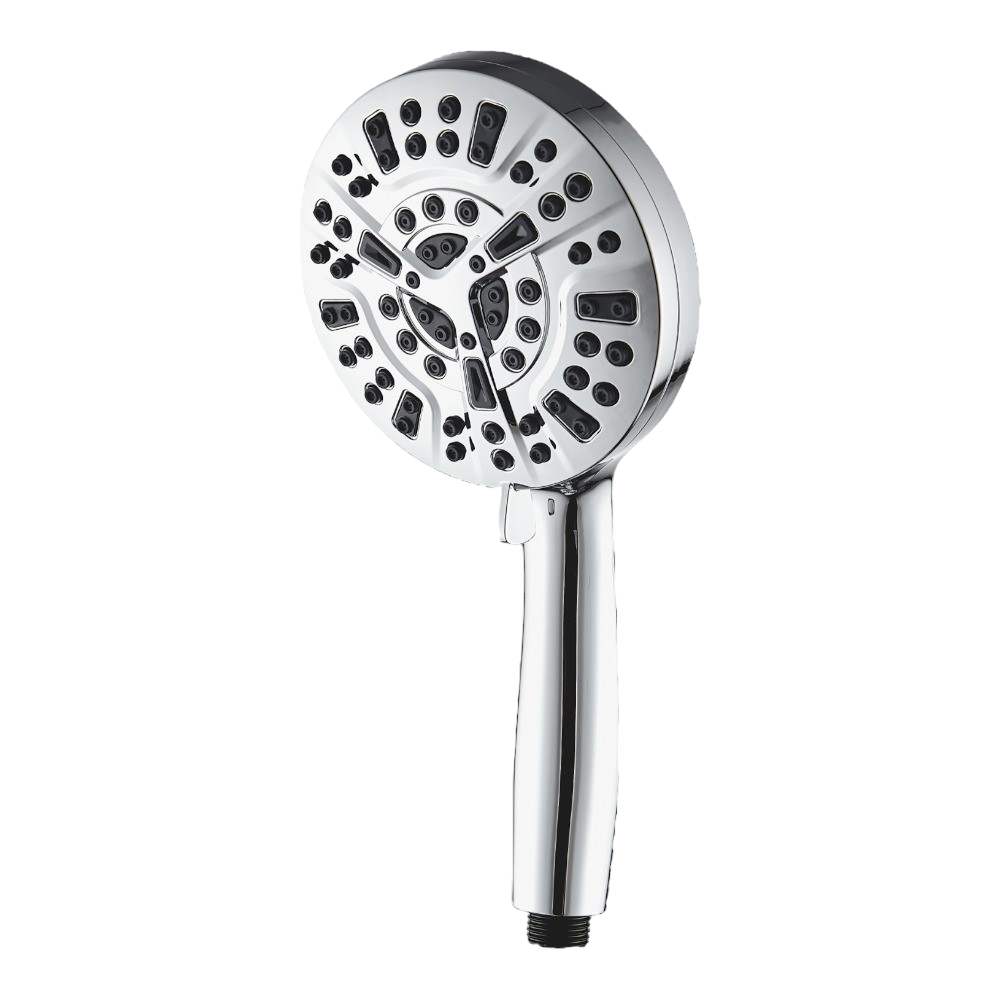
10 Mode High Pressure Shower Head
Versatile spray settings with premium filtration for a better shower.
Shop Now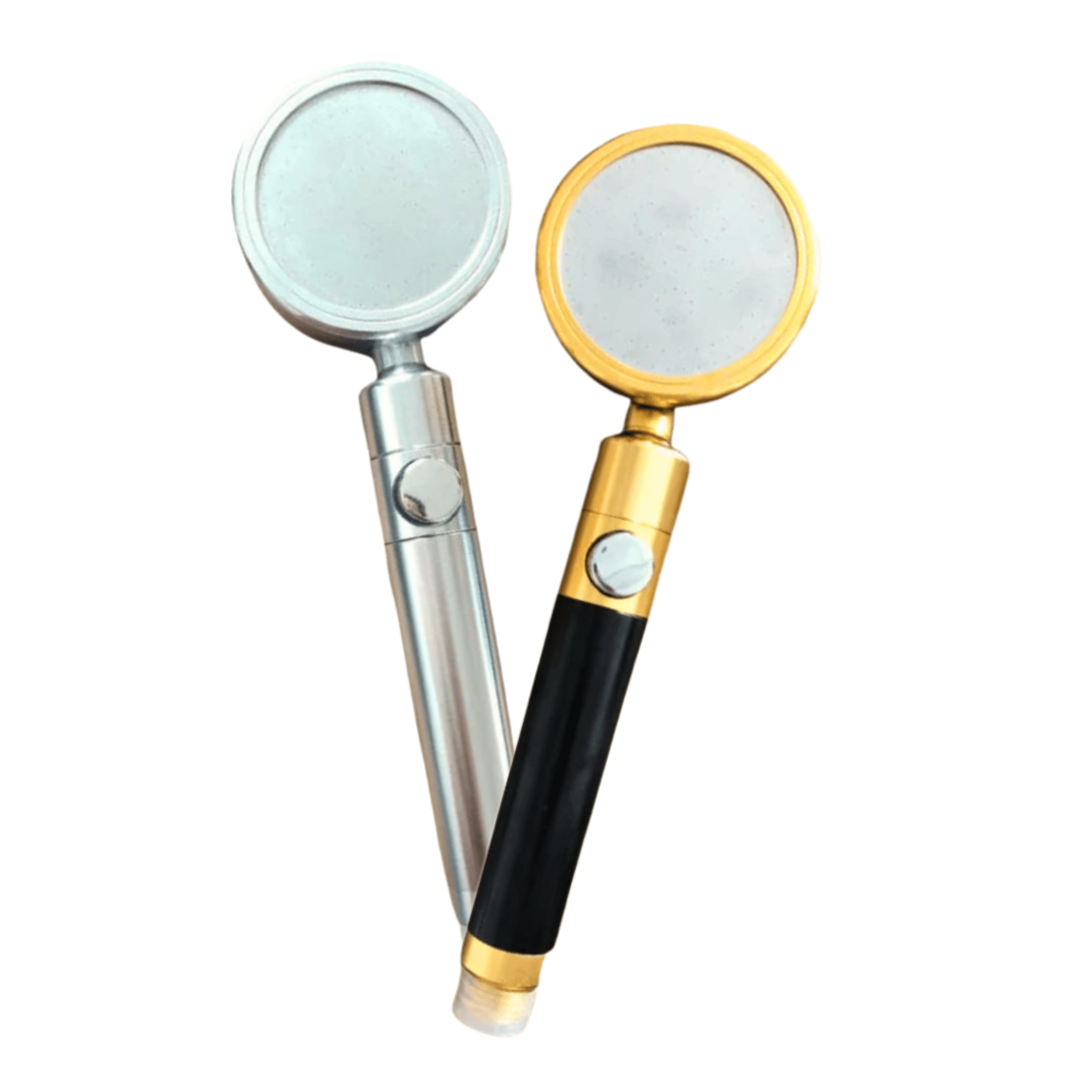
Duo Stainless Steel Shower Head
Stylish and durable dual-head design with high water pressure.
Shop Now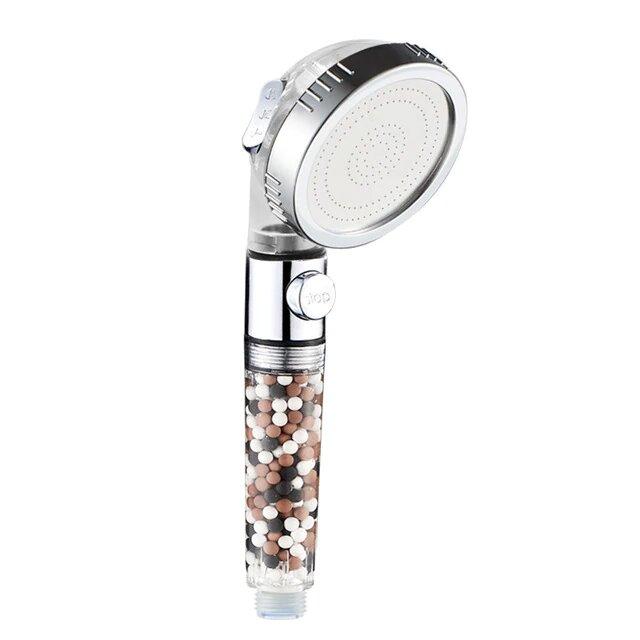
Ionic High Pressure Shower Head
Mineral filter, strong flow, and eco-friendly water-saving design.
Shop Now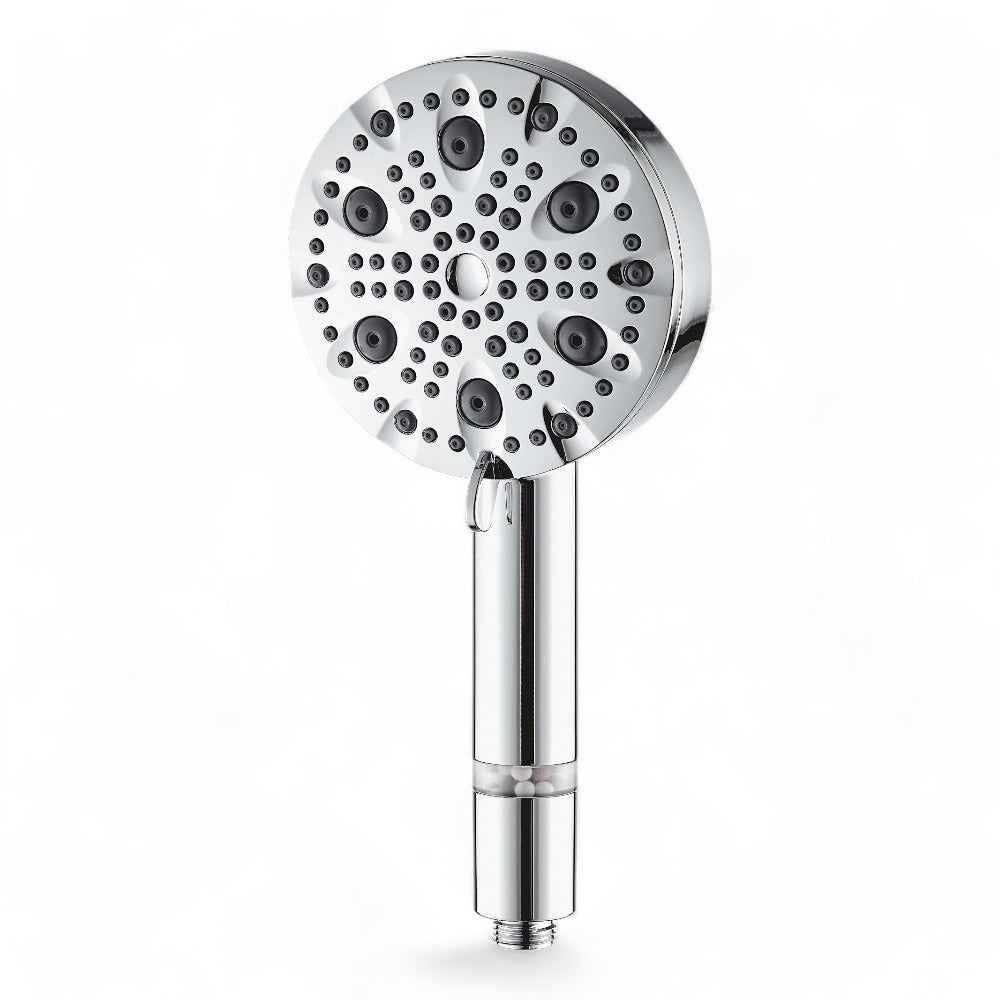
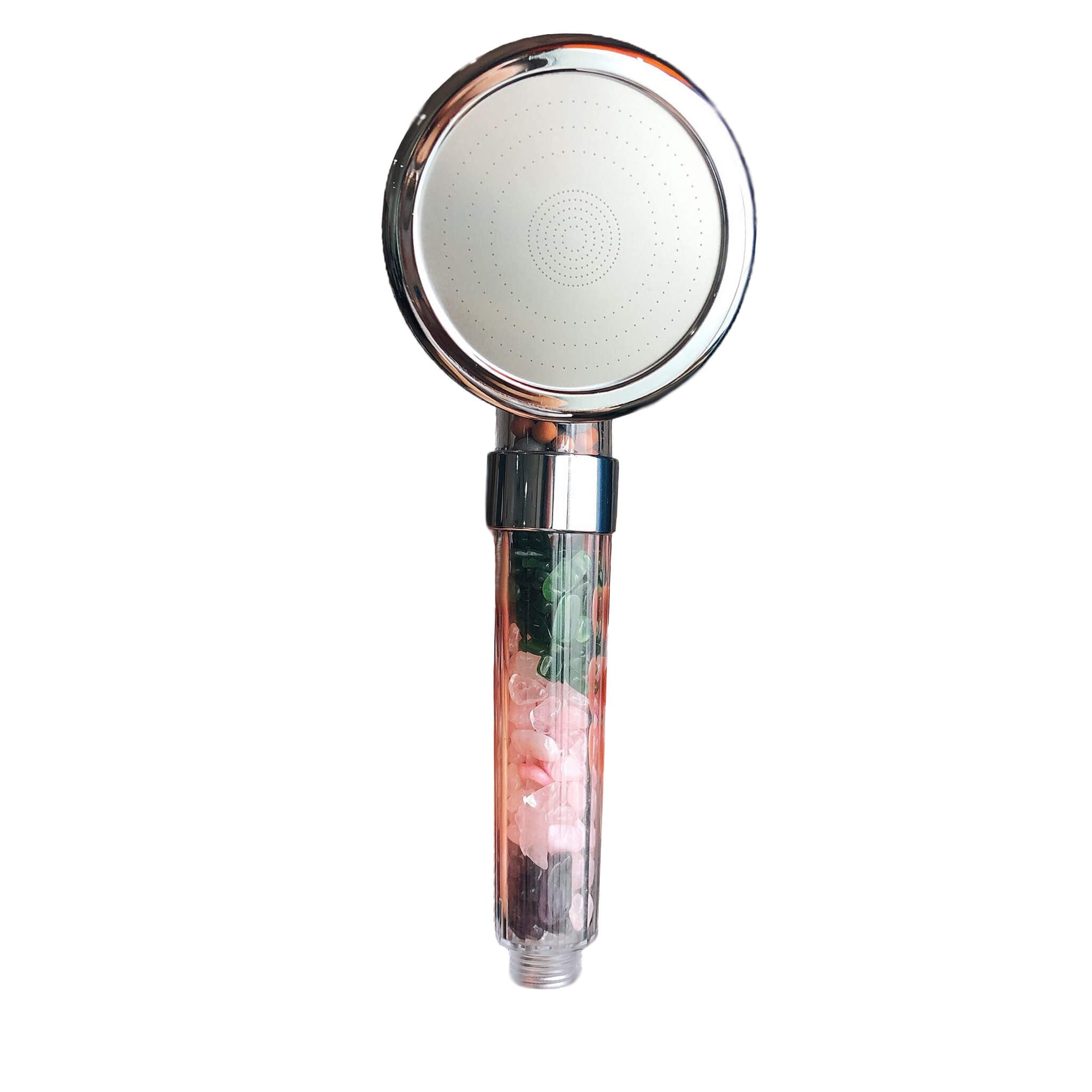
Chakra Crystal Filter Shower Head
Infused with healing stones for a revitalizing, filtered shower.
Shop Now



